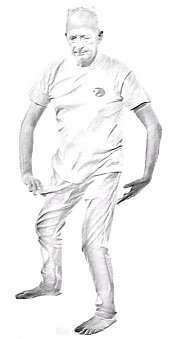5 Principles in 3 Postures
These workshops are suitable for beginners or people who wish to explore an embodied understanding of these ancient arts.
We will briefly look at five key principles; stability and balance, empowering compassionate intention, calming breath work, somatic mindfulness and flowing movement.
A person centred approach to learning makes these classes accessible to people with a wide range of abilities.
Stability; ‘To feel a physical sense of balance and stability through posture and movement. If we have physical stable it is reasoned this must transfer to an emotional sense of calmness, confidence and security.’
Intention; To move with compassion. To find power without tension in the body. Compassion towards an objective as well as compassion for self.’
Breath; ‘Breathing is one of the few autonomic actions within our body that we can control. Along with posture breathing is used to activate our calming parasympathetic nervous system.’
Attention; ‘Learn to find your personal best posture by paying attention to the sensation and feelings of your muscles, tendons and facia as you move.’
Connection; There are physical techniques that enable us to connect our whole body so that our movements flow. When we practice ‘stability, ‘intention’, ‘breathing’, ‘attention’ with ‘connection’ we develop a greater sensitivity to our physical self. Mindful movement then becomes moving meditation.’





